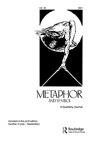和布鲁克有火花吗?通过使用创造性的(隐喻的)双关语吸引消费者参与性健康运动
IF 3.3
3区 文学
0 LANGUAGE & LINGUISTICS
引用次数: 0
摘要
摘要本文描述了一项与营销机构和非营利组织合作进行的研究,该组织提供区域性健康服务,其中包括性传播感染的建议和检测。该研究调查了不同形式的双关语在吸引力、幽默感、社交媒体参与的可能性以及寻求更多性传播感染信息的意图方面的相对有效性。包含双关语的广告在以下情况下更具吸引力和幽默感:(1)语法表述没有暗示意图;(2) 双关语包含了创造性的隐喻表达;(3)双关语指的是性场景的中间部分,指的是行动而不是意图或结果。参与者的评分因年龄、性别和教育程度而异。然而,对自由文本回答的定性调查显示,参与者提供的解释类型因年龄、性别和教育程度而异。营销机构将我们的调查结果纳入了他们的现场活动中,这导致了以下方面的显著增长:(a)网站流量和社交媒体参与度;(b) 订购STI家庭检测试剂盒;和(c)与以往活动相比,退回进行检测的STI试剂盒。本文章由计算机程序翻译,如有差异,请以英文原文为准。
Got a Spark with Brook? Engaging Consumers in a Sexual Health Campaign through the Use of Creative (Metaphorical) Double Entendres
ABSTRACT This paper describes a study conducted in collaboration with a marketing agency and a nonprofit organization (NPO) providing regional sexual health services, which included advice on, and testing for, sexually transmitted infections (STIs). The study investigated the relative effectiveness of different formulations of double entendres on appeal, humor, the likelihood of social media engagement, and intention to seek more information about STIs. Advertisements containing double entendres were significantly more appealing and humorous if: (1) the grammatical formulation did not cue the intended meaning; (2) the double entendre involved a creative metaphorical expression; and (3) the double entendre referred to the middle part of the sexual scenario, referring to action rather than intent or result. Participants’ ratings varied very little according to their age, gender, and education. However, a qualitative investigation of the free-text responses revealed that there was some variation in the types of interpretations that were offered by participants depending on their age, gender, and education. The marketing agency incorporated our findings into their live campaign, which resulted in a notable increase in: (a) website traffic and social media engagement; (b) STI home-testing kits ordered; and (c) STI kits returned for testing, compared with previous campaigns.
求助全文
通过发布文献求助,成功后即可免费获取论文全文。
去求助
来源期刊

Metaphor and Symbol
Multiple-
CiteScore
2.90
自引率
0.00%
发文量
23
期刊介绍:
Metaphor and Symbol: A Quarterly Journal is an innovative, multidisciplinary journal dedicated to the study of metaphor and other figurative devices in language (e.g., metonymy, irony) and other expressive forms (e.g., gesture and bodily actions, artworks, music, multimodal media). The journal is interested in original, empirical, and theoretical research that incorporates psychological experimental studies, linguistic and corpus linguistic studies, cross-cultural/linguistic comparisons, computational modeling, philosophical analyzes, and literary/artistic interpretations. A common theme connecting published work in the journal is the examination of the interface of figurative language and expression with cognitive, bodily, and cultural experience; hence, the journal''s international editorial board is composed of scholars and experts in the fields of psychology, linguistics, philosophy, computer science, literature, and media studies.
 求助内容:
求助内容: 应助结果提醒方式:
应助结果提醒方式:


